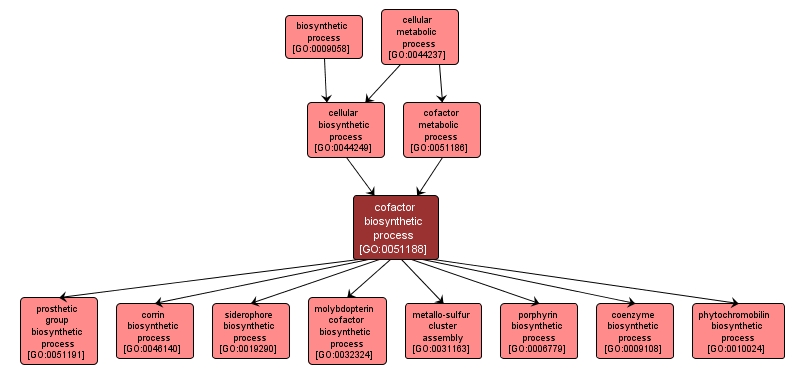GO TERM SUMMARY
|
| Name: |
cofactor biosynthetic process |
| Acc: |
GO:0051188 |
| Aspect: |
Biological Process |
| Desc: |
The chemical reactions and pathways resulting in the formation of a cofactor, a substance that is required for the activity of an enzyme or other protein. |
Synonyms:
- cofactor formation
- cofactor synthesis
- cofactor biosynthesis
- cofactor anabolism
|
|

|
INTERACTIVE GO GRAPH
|














